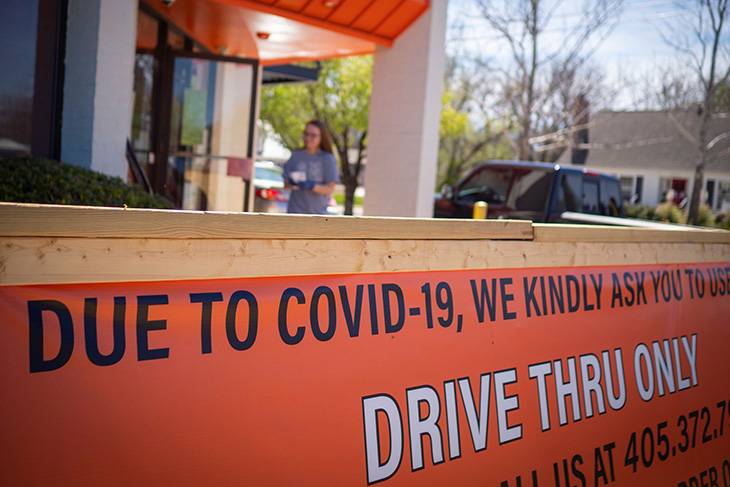OSU survey showcases public thoughts about economic recovery from pandemic
Friday, July 10, 2020
A recent Oklahoma State University study is providing insights about how public and private agencies can best apply resources to speed up recovery from economic disruptions caused by COVID-19.
Oklahoma officials at every level need to know what people think about perceived economic recovery challenges rather than relying on assumptions, and the study helps with that, said Amy Hagerman, OSU Extension agricultural and food policy specialist.

"Participation was voluntary," she said. "In all, we had 796 Oklahomans respond, representing 71 of the state's 77 counties."
OSU Extension specialists and researchers with the OSU Department of Agricultural Economics conducted the May 14 to June 3 survey, to which Oklahomans age 18 or older in a business or household could respond.
The most common occupations of respondents were farmers and ranchers, educators and Extension personnel. There were fewer cases of COVID-19 in rural areas as compared to urban areas when responses were collected.
Counties with the greatest number of survey participants: Payne, 14%; Grady, 9%; Oklahoma, 7%; Muskogee, 6%; and Tulsa, 5%.
Key takeaways include:
- Although respondents thought the strength of their local economy was worse than in January, they did not believe it was as bad as it could get. That has proven to be the case.
- Respondents were asked when the worst effects of the current crisis would be over. This was left up to interpretation – for some the worst effects were health-related, for others economic; 45% of participants believed it would take 10 or more months for the worst to be over.
- The more urban the area a respondent was from, the worse he or she believed the economy was when surveyed as compared to January.
- The greater decline in perceived economy strength in urban counties and county commissioner districts with larger cities aligns with urban areas having greater unemployment increases and greater numbers of businesses negatively affected by COVID-19.
- Respondents from urban counties also felt the impacts would last for a shorter period than did respondents from more rural counties. OSU analysts suggested this may reflect the closures of businesses in cities versus the longer-term market impacts of agricultural commodities that may be felt more strongly in rural areas.
- People in rural communities may have felt more comfortable continuing to shop in their communities, resulting in less of an economic impact.
- Farmers and ranchers were slightly more comfortable with participating in group meetings than the average respondent as defined by occupation.
- Although comfort in meetings increased with the level of rurality, only 66% of respondents in the most rural areas were comfortable with in-person meetings, defined as 10 or fewer people in attendance with social distancing protocols in place. In all, only 56% of respondents were comfortable attending such meetings.
Agricultural Economics Extension Specialist Courtney Bir recently spoke about the survey on OSU Extension’s agricultural television program SUNUP.
“Alternatives to in-person meetings need to be in every public and private agency’s plan of action for the foreseeable future,” Bir said. “It’s important to note this research represents a snapshot in time. As the number of cases changes, and if more rural areas are more greatly impacted, then people may begin to feel differently about their economic outlook. We plan to continue to provide information as needed.”
OSU Extension is one of two state agencies administered by the university’s Division of Agricultural Sciences and Natural Resources and is a key part of OSU’s state and federally mandated teaching, research and Extension land-grant mission.
MEDIA CONTACT: Donald Stotts | Agricultural Communications Services | 405-744-4079 | donald.stotts@okstate.edu
